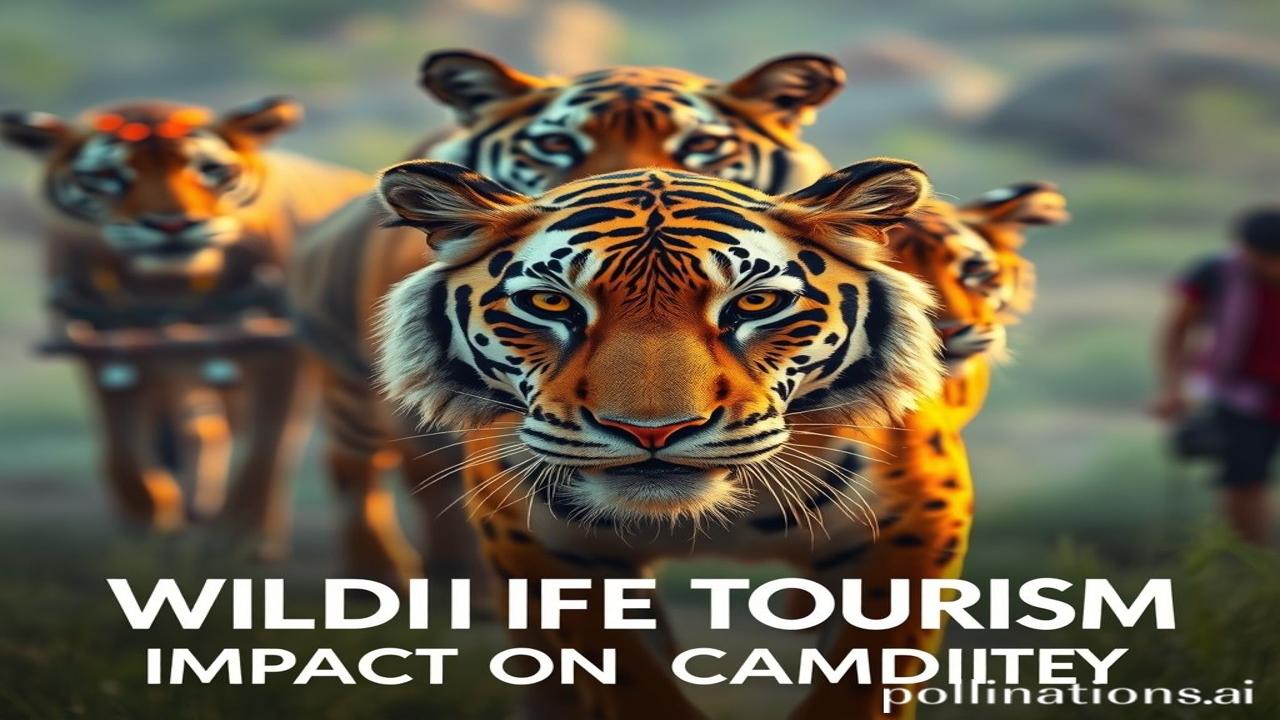Jungle Mein Jeevan: Wildlife Tourism & The People It Touches
Kabhi socha hai, jab ek sher dahadta hai, toh sirf jungle nahi, ek poori duniya hil jaati hai? Imagine, just for a moment, the deep, rumbling sound vibrating through the earth, echoing in the hearts of not just the animals, but the people who live alongside them. We romanticize jungle safaris, breathtaking sunsets over the savanna, but do we truly understand the dharohar – the heritage – and the responsibility that comes with it? Let’s dive into the fascinating, and sometimes complicated, relationship between wildlife tourism and the communities who call these wild places home.
Wildlife Tourism: A Brief History & Why It Matters
Wildlife tourism, in its simplest form, is traveling to see wild animals in their natural habitats. While the idea of observing animals has been around for ages, organized wildlife tourism really gained traction in the late 20th century. Think about it – pehle explorers jaate the, phir hunters, phir photographers, and akhir mein tourists. Destinations like the national parks of East Africa and the jungles of India became hotspots.
But why is it so important? Well, done right, wildlife tourism can be a powerful tool for conservation. It generates revenue that can be used to protect endangered species and their habitats. It also creates jobs and opportunities for local communities. However, and this is a big however, it can also lead to habitat destruction, displacement of people, and exploitation if not managed responsibly. This is where the “human element” comes into play.
Zameeni Sach: People & Livelihoods in the Shadow of Wildlife
Imagine you are Raju, a young man living in a village bordering the Kanha Tiger Reserve. For generations, your family has depended on the forest for firewood, grazing land for their cattle, and medicinal plants. Suddenly, with the increase in tourism, access to the forest becomes restricted. Hotels and resorts sprout up, often owned by outsiders, promising employment but often paying meager wages.
“Sahab, humara kya hoga? Jungle toh humara ghar hai,” Raju might ask. “What will become of us? The forest is our home.”
His mother, Lakshmi, a skilled weaver of bamboo baskets, used to sell her wares to villagers. Now, tourists haggle over the price, demanding discounts. She feels the traditional value of her craft being eroded.
The challenge is clear: How can wildlife tourism benefit local communities like Raju and Lakshmi, instead of marginalizing them? How can it be a force for empowerment, not displacement?
Dharohar aur Pehchan: Connecting to Indianness
Wildlife is deeply interwoven with the fabric of Bharatiyata (Indianness). Our epics and mythology are filled with animal symbolism. Think of Hanuman, the monkey god, or Ganesha with his elephant head. We worship animals, respect their power, and recognize their integral role in the ecosystem.
Today, this connection manifests in various ways. The revival of traditional crafts, like Lakshmi’s basket weaving, can be linked to eco-tourism, showcasing indigenous knowledge and preserving cultural heritage. Many communities are actively involved in conservation efforts, acting as guides, trackers, and protectors of the forest. This is where true shakti – power – lies: in empowering communities to become custodians of their natural heritage.
Majedar Tathya ya Bhram-Bhanjak: Myth vs. Reality
Log samajhte hain ki wildlife tourism hamesha achha hota hai, lekin asli sach yeh hai… it can have devastating consequences if not managed ethically and sustainably. Many believe that the money generated from tourism trickles down to the local communities, but often the profits are concentrated in the hands of a few large corporations.
Here’s another eye-opener: Sometimes, “eco-tourism” is just a marketing gimmick. Greenwashing is rampant, where companies falsely promote their activities as environmentally friendly. It’s crucial to be a conscious tourist, to research and support businesses that genuinely prioritize community development and conservation.
Drishya aur Bhavnayen: Sensorial Immersion
Imagine the smell of damp earth after the monsoon rains in the jungle. The feel of the cool morning air on your skin as you embark on a safari. The sound of cicadas buzzing in the distance, punctuated by the alarm calls of monkeys, signaling the presence of a predator. These are the sensory experiences that make wildlife tourism so captivating. But behind this beauty, there’s a complex reality.
Think about the feeling of awe as you spot a tiger in its natural habitat. But also, remember the faces of the villagers who live in constant fear of human-wildlife conflict.
Antim Vichar ya Uddharan: Closing Insight
Wildlife tourism has the potential to be a powerful force for good, fostering both economic development and environmental conservation. However, it requires a commitment to ethical practices, community empowerment, and a deep respect for the dharohar – the heritage – we are privileged to witness.
As the great poet Rabindranath Tagore once wrote: “The same stream of life that runs through my veins night and day runs through the world and dances in rhythmic measures.” Let us ensure that the same stream benefits all, human and animal alike.
